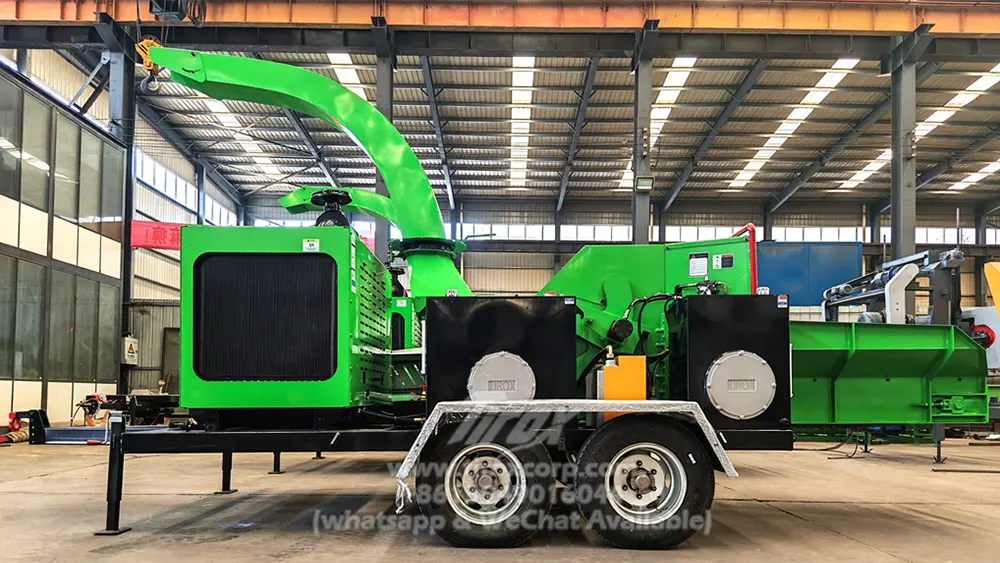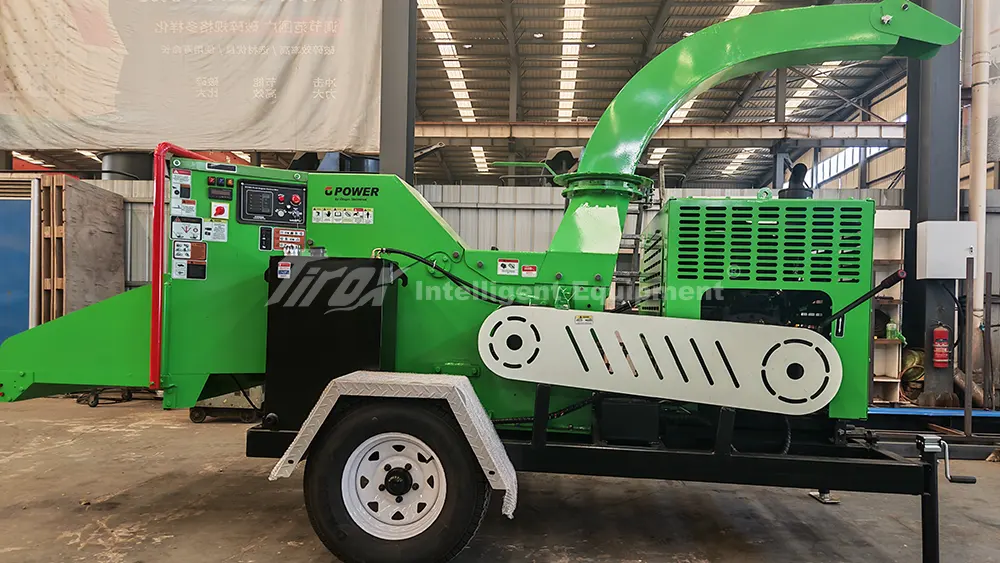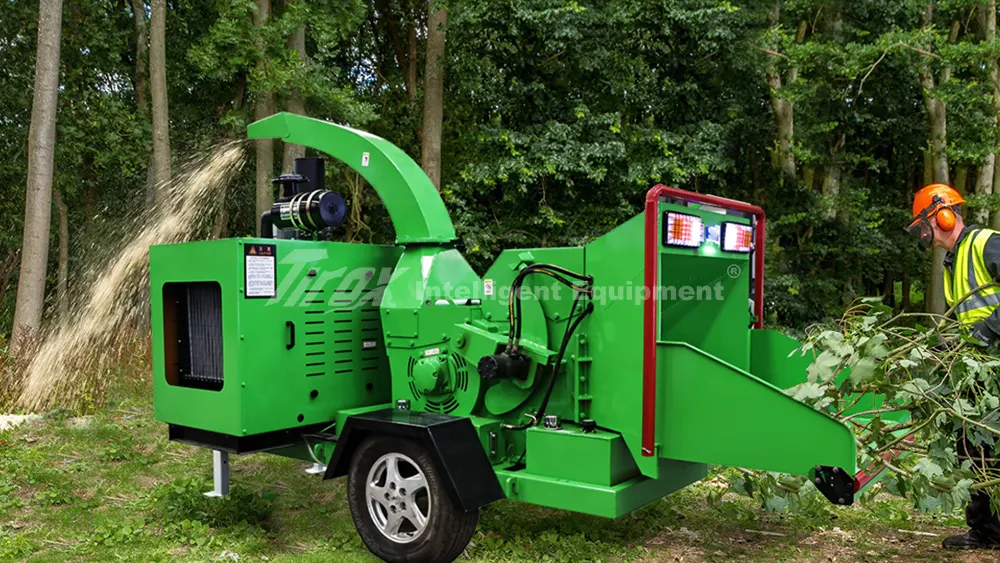Reducing costs is a big challenge for every company in the wood processing industry. With more competition in the market and the fluctuation of raw material prices, reducing wood processing costs is the key to improving your competitiveness. In this article, I will share with you five strategies to reduce wood processing costs. They are: optimize equipment selection and maintenance, improve production processes, manage raw materials effectively, improve employee skills and efficiency, and optimize logistics and supply chain management.
Optimize Equipment Selection and Maintenance
1. Choose High-Efficiency,Energy-Saving Equipment
Choosing high-efficiency, energy-saving equipment is the first step to reducing wood processing costs. Although the initial investment of high-efficiency equipment may be higher, the long-term energy savings and efficiency improvements can significantly reduce operating costs. For example, energy-efficient chippers can reduce electricity or diesel consumption and increase processing speed, which will reduce the processing cost per unit of time. Choosing the right equipment model that meets your production needs and considering its energy performance can save you a lot of energy expenses.
2. Regular Maintenance and Upkeep
Regular maintenance and upkeep can prevent many potential problems, reduce equipment failure rates, and extend equipment life. Establishing a detailed maintenance plan, including daily inspections, regular maintenance, and necessary repairs, can ensure that your equipment is in good working condition. Preventive maintenance not only reduces the risk of unexpected downtime but also reduces the cost of major repairs and replacements.
3. Upgrade Outdated Equipment
Outdated equipment usually has lower efficiency and higher maintenance costs. By upgrading or replacing old equipment, you can improve production efficiency and reduce maintenance and operating costs. Modern equipment usually has higher automation levels and energy efficiency, which are more suitable for current market demands and technological advancements.
Improve Production Processes
1. Automation and Intelligence
Introducing automated production lines and intelligent control systems is an effective way to improve production efficiency and reduce processing costs. Automated equipment can minimize manual intervention, reduce the risk of human error, and increase production continuity. Intelligent control systems can monitor and optimize production processes in real-time, automatically adjusting parameters to improve efficiency. In addition, automation and intelligent equipment can reduce labor costs and improve production safety.
2. Reduce Waste and Scrap
Waste and scrap are inevitable in wood processing. By precise cutting and optimizing material use, you can minimize waste. Implementing waste recycling and reuse programs can convert wood waste into valuable by-products such as wood chips and sawdust, which can reduce disposal costs and increase revenue. Optimizing production processes and workflows to minimize unnecessary material waste is an important measure to reduce processing costs.
Effective Raw Material Management
1. Rational Procurement and Inventory Management
Rational procurement and inventory management can significantly reduce raw material costs. Bulk purchasing can get price discounts and reduce procurement costs. Implementing scientific inventory management can avoid raw material overstock and waste, reducing inventory costs. Using advanced inventory management systems to monitor raw material levels in real-time and arrange procurement plans can ensure the stability and timeliness of raw material supply.
2. Raw Material Quality Control
The quality of raw materials directly affects processing costs. Strictly inspecting raw material quality to ensure it meets production requirements can prevent increased processing costs due to substandard materials. Establishing long-term cooperation with reliable suppliers can ensure stable raw material supply, which is crucial for controlling raw material costs.
Enhance Employee Skills and Efficiency
1. Training and Skill Improvement
Employee skills and efficiency are important factors affecting production costs. Regular training to improve employees’ operational skills and work efficiency can significantly reduce production costs. Training should cover equipment operation, maintenance, safety production, and more, so that employees can master the latest technologies and operating standards, thereby improving work quality and efficiency.
2. Incentive Mechanisms
Implementing performance reward systems to motivate employees to increase productivity is an effective measure to reduce costs. Providing rewards based on employees’ performance and productivity can boost morale and overall efficiency. In addition, establishing a reasonable assessment and evaluation mechanism can encourage employees to continuously improve their skills and efficiency.
Optimize Logistics and Supply Chain Management
1. Efficient Logistics System
An efficient logistics system can significantly reduce transportation costs. Choosing reliable logistics partners, optimizing transportation routes and loading plans can improve logistics efficiency, reduce transportation time and costs. Using advanced logistics management systems to monitor logistics status in real-time can ensure the timely and safe delivery of materials.
2. Supply Chain Integration
Establishing close cooperation with suppliers and integrating the supply chain can optimize procurement and production processes, reducing costs. Using e-commerce platforms to simplify procurement processes, improve procurement efficiency, and reduce procurement costs is beneficial. Supply chain integration can enhance the stability and timeliness of raw material supply, minimizing production delays and cost increases due to supply instability.
Conclusion
Reducing wood processing costs is the key for every company to improve competitiveness. By optimizing equipment selection and maintenance, improving production processes, managing raw materials effectively, improving employee skills and efficiency, and optimizing logistics and supply chain management, you can achieve significant cost reductions, improved production efficiency, and market competitiveness.By implementing these five strategies comprehensively, you can reduce costs and increase production efficiency, thereby enhancing your market competitiveness and achieving better economic benefits. If you have any questions or need further consultation, please contact our professional team. We are dedicated to serving you.






